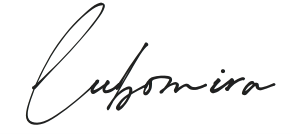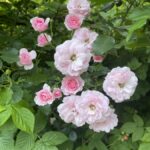“The fire of transcending limits jumps over the fence. Dance, rhythm, movement, and union. The boundary between I and the not-I melts. One goes beyond oneself to a new wholeness. A cat jumps the fence with grace, intelligence and bravery, self honesty and clarity of mind, into a new force-field to become leopard. The boundaries between you and I dissolve, and we come into union, a new awareness, a new wholeness. Past meets the future in the present, a marriage of scent, sight, touch, taste and hearing.”
In my astrology sessions, I love going over the atmakaraka and darakaraka in my clients’ natal charts, because the insights become so deep and beautiful, as if we are entering whole new worlds unveiling veils of symbology and mysticism. Today though I wanted to share a bit more deeply on some of my insights on these two, as to what they represent spiritually and esoterically, but also quite literally in our lives.
What are the atmakaraka and darakaraka?
In Jaimini’s degree-based karaka system, each of the seven planets from the Sun to Saturn represent the people in our life or a specific energy or area of life. I use the seven planets, but some people use an eight karaka system including Rahu. Simply speaking, our atmakaraka represents the “self” and the darakaraka “our spouse”. But it’s so much more deeper than that.
According to ancient texts of Jaimini Sutra, our atmakaraka planet, also known as our soul planet, provides great insight into the area of life our soul longs for. Atma means soul and karaka means indicator/to create. In essence, our atmakaraka shows our soul’s desire and purpose, or that which does not die even when we no longer have bodies. Our atmakaraka, in a way, continues on to our next life, and some astrologers believe that in our next life’s atmakaraka will be the ruler of the sign it occupies in the navamsa chart. You can learn more about each atmakaraka in my article Atmakaraka: What is Your Soul’s Desire?
Our darakaraka on the other hand is that which we seek in another in order to feel a sense of completion within ourselves and soul evolution. It’s not just the spouse or partner or soulmate – it is the qualities within another person that will always pull us forward – because internally we seek them for our growth.
This is why relationships serve as mirrors through which we can reflect, transform and can grow spiritually. Simply speaking, your darakaraka may show you your spouse’s nature, and the house it sits in will show you what area of life they’ll be contributing to the most and part of the fulfillment they’ll bring to you in this life.
For example, if your darakaraka is in your 9th house, your spouse help support and fulfill your higher desires. They will bring you luck, fortune, as a result of your past life good karma, and will be very supportive of you, also acting as a guide to help you fulfill your soul’s purpose. If your darakaraka is Jupiter, then your spouse will be someone you can look up to, someone very intelligent, charming, joyful, and loves travelling (you’ll probably travel a lot together), and they might be of a foreign background to you. They will probably have very high morals and values and hold themselves with courage and integrity, and could be perhaps even working in the justice or legal system or of high social standing or high education; they will be someone you can trust and rely on, and who will be very loyal and devoted, and help you achieve higher status. They might have significant planets in Sagittarius or carry that energy through house or aspects (Jupiter aspects or 9th house placements) or just have more of a Jupiter-like personality.
Of course, these are only very general, as the nakshatras and aspects show us the real depth and beauty of how things may unfold in our life.
How do you find the atmakaraka and darakaraka in your chart?
Your atmakaraka is the planet that holds the highest degree in your natal chart of the planets from Sun to Saturn, regardless of the sign and house; and your darakaraka is the one with the lowest degrees. Since karakas are sensitive to degrees, you need to know your birth time because the Moon changes degrees every few hours.
So first, I want you to look at your following planets: Sun, Moon, Mercury, Venus, Mars, Jupiter and Saturn. These are known as the visible planets, and your atmakaraka is the one with the highest degrees, while your darakaraka is the one with the lowest degrees. For example, let’s say your Moon is at 12 degrees Taurus and your Venus is at 2 degrees Scorpio. This means that of the two, Venus holds the lower degrees because 2 is less than 12.
You can also look at its nakshatra, sign, house placement, planetary rulership and aspects for further information. If it’s in the third house, and conjunct your ascendant ruler, it will certainly influence its meaning. In fact, if your atmakaraka is conjunct your ascendant ruler – it is said that it will be much easier for you to fulfill your soul’s desire in this life. And if you have a harmonious aspect between your darakaraka and atmakaraka you’ll most likely have a beautiful love marriage, full of passion and support, sharing very good past life karma.
Deeper Insights on the Darakaraka and Atmakaraka
Now let’s dive deeper. Both of these karakas actually carry undertones of both Rahu and Ketu, relating to our destiny and soul’s path in this life.
The path from our Ketu to Rahu is known as the path of consciousness and our soul’s evolution; and the path from our Ascendant to our Descendant is essentially the path of our body driven by desire towards the “otherness” or the inner marriage of integrated self and liberation from shadow.
In some esoteric beliefs people relate our atmakaraka to Rahu and our darakaraka to Ketu, while others view the opposite, and I too resonate more with the undertones of linking the energy of Ketu for the atmakaraka and Rahu for the darakaraka – but more holistically, speaking from a spiritual perspective, I believe each holds the other on that path of consciousness and within each is the other residing. In other words, I believe the atmakaraka holds intimately both the Rahu and Ketu in its marriage, just as the darakaraka too holds both the marriage of Rahu and Ketu within its ocean.
So let’s dive into this further.
Ketu or the South Node is where we’ve already been – it is the something whose body or form we left behind us and yet it is all around us continuously. It’s the beyond shape and form. It is a scent in the air, a familiar fragrance – it is timeless, and formless. It is the monk who prays or meditates – not the monk’s body, but the spirit of the monk, his prayers, which is why the South Node is related to spirituality, mysticism, surrender, trust and faith, the intangible things, and all things which though we can’t touch can still be around us. The South Node “things” remain even when there is no more form nor shape nor skin. As such, Ketu is a portal of release, and its significance is the essence.
This is the higher purpose of marriage and of love: to peel the layers of our bark so that we unveil our true fragrance, scent, our true essence. Love is a peeler; it peels all that is false, false masks and outdated identities, so that boundaries dissolve and we deepen into intimacy as we unveil our true selves and see who we truly are.
The darakaraka sits closest to the zero degree point in our chart i.e. it is the one who is closest to its purest state or energy of a sign. If the ascendant is our front door to our house, the unfufilled past life desires of whose passion we decided to incarnate again, at the chance of fulfilling them – then the descendant, or our marriage, is the back door of our house. It is the one through which, or through whom, we will face our deepest self, our shadow self, and then be able to purify and transcend all that we weren’t able to before, so that our soul is liberated.
The higher purpose of marriage is devotion, trust, surrender, learning to love and to protect and to nurture – learning to be about someone other than the self. It is a devotional pathway, because love is a devotional pathway, and it is a temple and a church that we enter into when we share our vows – for these are vows made not only with lips, they are made with our souls.
Our marriage partner is often destined, just like marriage is often destined, and it is usually a partner from a past life. This is again this Ketu-nian nature or undertone to it all. There is an essence of a love or a dynamic that continues beyond, and if there is karma, both are now here to settle it into peace. There is good karma, not so great karma, and there is sometimes disastrous karma. Nonetheless, a marriage, or any kind of relationship for that matter, is meant to teach us something and help us grow spiritually. People do not meet by chance, and all is purposeful in the lands of relationships, and the otherness and togetherness. The higher purpose of marriage, or its sacrament, is soul growth and the humility to allow something greater than us to move us, transform us, expand us.
So in this way, our darakaraka relates to our Ketu; but it also connects to our Rahu because we are driven by desire to move towards the one our soul seeks. The darakaraka isn’t merely about our soulmate or partner, it is the qualities which we seek to develop within ourselves, which is why it holds the lowest degrees; and through our destined partner our soul seeks to develop these further. We can only meet another as deeply as we’ve met ourselves, which is why the darakaraka and atmakaraka are kind of within the vow of one marriage, holding within them both the past and future in the present.
In the same way, our atmakaraka echoes parts of Rahu, and parts of Ketu also. Let’s start with its Rahu connection.
If Ketu is the part that is formless, and all about the essence of things, Rahu or our North Node is the place we go to form things – it is like our life’s work or calling in this life, as we continue on our way to fulfilling our soul’s purpose.
The North Node is where forms arise out of desires, and where the soul always pushes us to go towards. It is how our soul comes through to create forms – it’s like atoms coming together and become material. It is like a sculptor who wants to take the intangible desires and shape it, and form it, with his hands. Our North Node isn’t just some thing we come into life to do or even a simple soul’s purpose description or a place of getting things and possessions – it is a path of forming unformed yet things into the material. As such, it is also sometimes known as maya or illusion, and we can get obsessed with the thought of it. What is obsessing us is the desire towards it because desire is what guides us to do things we haven’t done before – and yet these desires are first formed because there was a need for them already created in the world, and if we weren’t meant to experience them or able to have them, they would not have arisen anyway. The North Node provides us a path of soul growth because we form things out of the unmanifest, unknown and uncomfortable; and new sculptures may sometimes not look amazing at first try, but we learn as we continue hands-on moving and shaping and forming.
As every new formation, or sculpture, we learn along the way because it is new, which is why we may often face challenges, uncertainty, doubts, and many obstacles. One of the main lessons is patience and perseverance, as well as being aligned to values, higher principles, the seven virtues, having integrity, and gaining self confidence and self trust as we continue forward despite the uncertainty that this newness brings. And yet Rahu is not separate from Ketu, they are together, sharing a thread. So our North Node isn’t something new we will create in a life or have a new path of life, or a new soul’s purpose – it is the same soul’s purpose, but we are approaching it differently perhaps, or learning a new skill for our sculping so that we create something more wholesome. Our Ketu’s gifts and lessons have been over many lifetimes, and we use this wisdom for our current life.
Our atmakaraka too is a significator of our soul and its desires – and it too isn’t a separate thing from past lives. What it shares with Rahu is its desire forward because it usually shows the strongest position in our chart or what we’ll be most strongly connected to to move forward in life. Our atmakaraka shows our outward or worldy desires – and – it shows the spiritual lessons we’ll be learning along the way there. As it holds the highest degree in our chart, it shows karmic lessons we’ll have also, and similar to our North Node, it shows the spiritual lessons we’ll need to learn from and evolve in order to achieve our deeper desires.
Our atmakaraka also shares an intimate link to our Ketu and past lives, and what we have developed throughout many lives – it is our atma. Our atmakaraka is something that has been a part of us through many lives – it is like our soul’s lineage; and yet it is also carrying themes and skill we’ll continue mastering and refining and applying in new ways now in this life on our path to evolution.
Final notes:
When two souls meet, they touch and kiss, and find that love is not only known in the hearts, it is known by the hands also. Of their love a new soul is born: the soul of the relationship.
Together the atmakaraka and darakaraka are not merely planets or points showing us our spouse or indicator of self, they are so much more than that – they are a devotional path, because love itself too is a devotional path. On the one hand we continue on from the formless, we continue the path of our soul’s desires and dedication to refinement; and on the other hand our relationships, or the otherness, or the other, is what allows us an opportunity for a deepening, for a peeling of our bark so that we unveil our true essence. The beloved is a gift of God because the way love transforms us nothing else ever can. There is only truth in love. There is purity of heart. And as the heart is the initiatory pathway for soul growth, both of these karakas are inevitable part in a person’s life.
For personal readings with me, you are welcome to browse through my Offerings.

For more of my writings, browse through my Art of Love.
If you wish to support me and my work, you may do so by sharing it or donate here. For personal readings with me, you may visit my Offerings.
Your support means so much to me! Thank you wholeheartedly!
Cover art by Margarete Petersen.




